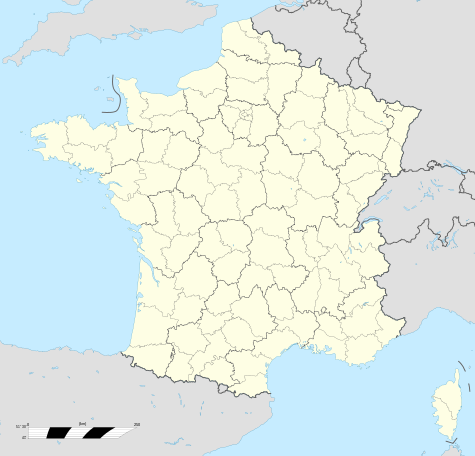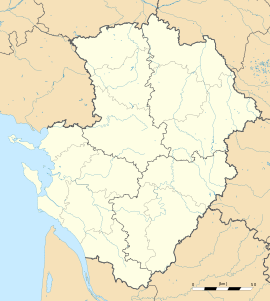Cognac
|
Cognac
|
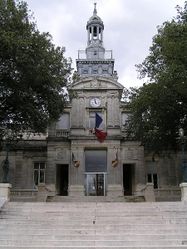 |
| Cognac Town hall |
|
|
Location within Poitou-Charentes region
|
| Administration |
| Country |
France |
| Region |
Poitou-Charentes |
| Department |
Charente |
| Arrondissement |
Cognac |
| Mayor |
Jérôme Mouhot
(2001–2008) |
| Statistics |
| Elevation |
5–53 m (16–174 ft)
(avg. 27 m/89 ft) |
| Land area1 |
15.5 km2 (6.0 sq mi) |
| Population2 |
21,451 (estimated 2009[1]) |
| - Density |
1,384 /km2 (3,580 /sq mi) |
| INSEE/Postal code |
16102/ 16100 |
| 1 French Land Register data, which excludes lakes, ponds, glaciers > 1 km² (0.386 sq mi or 247 acres) and river estuaries. |
| 2 Population sans doubles comptes: residents of multiple communes (e.g., students and military personnel) only counted once. |
|
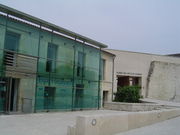
The musée des arts du Cognac
|
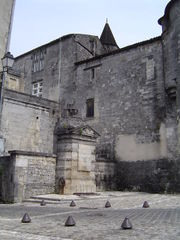
The Château des Valois
|
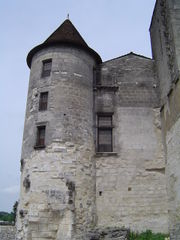
The Château des Valois
|
Cognac is a commune in the French département of Charente, of which it is a sub-prefecture.[2] The inhabitants of the town are known as Cognaçais.
Geography
Cognac is situated on the river Charente between the towns of Angoulême and Saintes. The majority of the town has been built on the river's left bank, with the smaller right bank area known as the Saint Jacques district. The town is situated on one of the pilgrimage routes to Santiago de Compostella. The town is also home to the French Air Force training base 709. Cognac is 250 miles southwest of Paris.
History
Unknown prior to the 9th century, the town was subsequently fortified. During the Hundred Years' War, the town changed sides on several occasions as the result of fighting and treaties in the region.
Francis I granted the town the right to trade salt along the river, guaranteeing strong commercial success, which in turn led to the town's development as a centre of wine and later brandy.
Tourist sites
The town's medieval quarter "Vieux Cognac" runs from the Tours Saint-Jacques, alongside the river, up to the Saint-Léger church. The area contains many unusual buildings, built between the 15th and 18th centuries, situated on narrow cobbled streets. Many contain sculptures of the salamander, the symbol of King François I, as well as gargoyles and richly decorated facades.
- The Château des Valois, an important medieval trading post.
- The Saint-Léger church. [Church Exterior:[3],[4]
- The musée d'Art et d'Histoire (art and history museum)
- The musée des arts du Cognac (art museum)
- The Saint-Gobain glassworks and barrelworks
- Cognac Public Garden
The area also contains many Romanesque churches as well as several châteaux.
Cognac
Main article:
Cognac (drink)The town gives its name to one of the world's best-known types of brandy or eau de vie. Drinks must be made in certain areas around the town of Cognac and must be made according to strictly-defined regulations to be granted the name Cognac.
Cognac is a unique spirit in that it is double distilled. This process can be viewed in one of the many "Grande Marque" Cognac houses which all have visitor centres. Most central in the town are Hennessey; Martell; Otard; Camus; Remy Martin. About 15 km (9.32 mi) East of Cognac is Jarnac, home to Courvoisier. Any of these establishments are well worth a visit and all charge only a modest entry fee.
There are six vineyard areas around the Cognac area, all of which are considered Appellation Controlee for Cognac, but which are considered to vary in quality from the best growth area of "Grande Champagne" (nothing to do with the Champagne wine region in NE France)through "Petite Champagne" then "" Borderies", "Fine Bois" , "Bon Bois" and finally "Bois Ordinaire". The best Cognacs are generally only made using Grande and Petite Champagne grapes, but all Cognac is produced by blending a variety of "Eau de Vie" which can be made from grapes from different locations, and from different vintages. It is the Cellar master's skill that ensures that a brand's Cognac is recognisable regardless of when it is produced since he can blend multiple eaux de vie to achieve the right taste for his house.
Different qualities of Cognac are produced by all brands, and include VS (very special); VSOP (very superior old pale) and XO (extra old). (It's notale that English terms are still used since in the early days of Cognac production it was the British and Irish who were both the main consumers and also became some of the main producers of Cognac using similarly acquired techniques to distillation of whisky, etc.) These are controlled by the length of time the Cognac is allowed to mature in oak barrells, a minimum time being required at each grade level. The longer the Cognac matures in the barrel the smoother it will generally become. Once it is bottled no further development takes place. Most houses still have barrels of Cognac dating back to the 19th century sitting in their cellars waiting for fine blending by the Cellar Master. It is intiguing to see such casks and demi-johns labelled with their year of production and to think about what was happenning in the world on the day the eau de vie was first put into the barrel........
Population
Historical population of Cognac
| 1962 |
1968 |
1975 |
1982 |
1990 |
1999 |
2006 |
| 20798 |
22062 |
22237 |
20660 |
19528 |
19525 |
19409 |
Miscellaneous
Famous residents
- François I was born in the town's castle in 1494. He was king of France between 1515 and 1547. The town's main square is named after him and a statue of the king on horseback towering over his enemies stands at the centre.
- The French poet Octavien de Saint-Gelais was born in Cognac in 1468.
- Paul-Emile Lecoq de Boisbaudran, born in Cognac in 1838 discovered the elements Gallium in 1875 and Samarium in 1878.
- Jean Monnet, one of the founding fathers of the European Union was born in Cognac in 1888.
- The car manufacturer Louis Delâge was born in Cognac in 1874.
- The glassmaker Claude Boucher, inventor of the glass-blowing machine in around 1880, lived and worked in Cognac.
- The French adult film star and model François Sagat was born in Congac.
Sport
International relations
Twin towns — sister cities
Cognac is twinned with:
References
- Notes
External links
Communes of the Charente department 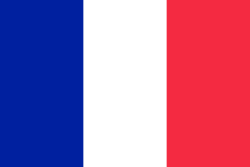 |
|
Abzac · Les Adjots · Agris · Aignes-et-Puypéroux · Aigre · Alloue · Ambérac · Ambernac · Ambleville · Anais · Angeac-Champagne · Angeac-Charente · Angeduc · Angoulême · Ansac-sur-Vienne · Anville · Ars · Asnières-sur-Nouère · Aubeterre-sur-Dronne · Aubeville · Auge-Saint-Médard · Aunac · Aussac-Vadalle · Baignes-Sainte-Radegonde · Balzac · Barbezières · Barbezieux-Saint-Hilaire · Bardenac · Barret · Barro · Bassac · Bayers · Bazac · Beaulieu-sur-Sonnette · Bécheresse · Bellon · Benest · Bernac · Berneuil · Bessac · Bessé · Bignac · Bioussac · Birac · Blanzac-Porcheresse · Blanzaguet-Saint-Cybard · Boisbreteau · Bonnes · Bonneuil · Bonneville · Bors-de-Baignes · Bors-de-Montmoreau · Le Bouchage · Bouëx · Bourg-Charente · Bouteville · Boutiers-Saint-Trojan · Brettes · Bréville · Brie · Brie-sous-Barbezieux · Brie-sous-Chalais · Brigueuil · Brillac · Brossac · Bunzac · Cellefrouin · Cellettes · Chabanais · Chabrac · Chadurie · Chalais · Challignac · Champagne-Mouton · Champagne-Vigny · Champmillon · Champniers · Chantillac · La Chapelle · Charmant · Charmé · Charras · Chasseneuil-sur-Bonnieure · Chassenon · Chassiecq · Chassors · Châteaubernard · Châteauneuf-sur-Charente · Châtignac · Chavenat · Chazelles · Chenommet · Chenon · Cherves-Châtelars · Cherves-Richemont · La Chèvrerie · Chillac · Chirac · Claix · Cognac · Combiers · Condac · Condéon · Confolens · Coulgens · Coulonges · Courbillac · Courcôme · Courgeac · Courlac · La Couronne · Couture · Cressac-Saint-Genis · Criteuil-la-Magdeleine · Curac · Deviat · Dignac · Dirac · Douzat · Ébréon · Échallat · Écuras · Édon · Empuré · Épenède · Éraville · Les Essards · Esse · Étagnac · Étriac · Exideuil · Eymouthiers · La Faye · Feuillade · Fléac · Fleurac · Fontclaireau · Fontenille · La Forêt-de-Tessé · Fouquebrune · Fouqueure · Foussignac · Garat · Gardes-le-Pontaroux · Genac · Genouillac · Gensac-la-Pallue · Genté · Gimeux · Gond-Pontouvre · Gondeville · Les Gours · Gourville · Le Grand-Madieu · Grassac · Graves-Saint-Amant · Guimps · Guizengeard · Gurat · Hiersac · Hiesse · Houlette · L'Isle-d'Espagnac · Jarnac · Jauldes · Javrezac · Juignac · Juillac-le-Coq · Juillaguet · Juillé · Julienne · Jurignac · Lachaise · Ladiville · Lagarde-sur-le-Né · Lamérac · Laprade · Lésignac-Durand · Lessac · Lesterps · Lichères · Ligné · Lignières-Sonneville · Linars · Le Lindois · Londigny · Longré · Lonnes · Louzac-Saint-André · Lupsault · Lussac · Luxé · La Magdeleine · Magnac-Lavalette-Villars · Magnac-sur-Touvre · Maine-de-Boixe · Mainfonds · Mainxe · Mainzac · Malaville · Manot · Mansle · Marcillac-Lanville · Mareuil · Marillac-le-Franc · Marsac · Marthon · Massignac · Mazerolles · Mazières · Médillac · Mérignac · Merpins · Mesnac · Les Métairies · Mons · Montboyer · Montbron · Montchaude · Montembœuf · Montignac-Charente · Montignac-le-Coq · Montigné · Montjean · Montmoreau-Saint-Cybard · Montrollet · Mornac · Mosnac · Moulidars · Mouthiers-sur-Boëme · Mouton · Moutonneau · Mouzon · Nabinaud · Nanclars · Nanteuil-en-Vallée · Nercillac · Nersac · Nieuil · Nonac · Nonaville · Oradour · Oradour-Fanais · Orgedeuil · Oriolles · Orival · Paizay-Naudouin-Embourie · Palluaud · Parzac · Passirac · Péreuil · Pérignac · La Péruse · Pillac · Les Pins · Plaizac · Plassac-Rouffiac · Pleuville · Poullignac · Poursac · Pranzac · Pressignac · Puymoyen · Puyréaux · Raix · Rancogne · Ranville-Breuillaud · Reignac · Réparsac · Rioux-Martin · Rivières · La Rochefoucauld · La Rochette · Ronsenac · Rouffiac · Rougnac · Rouillac · Roullet-Saint-Estèphe · Roumazières-Loubert · Roussines · Rouzède · Ruelle-sur-Touvre · Ruffec · Saint-Adjutory · Saint-Amant · Saint-Amant-de-Boixe · Saint-Amant-de-Bonnieure · Saint-Amant-de-Nouère · Saint-Angeau · Saint-Aulais-la-Chapelle · Saint-Avit · Saint-Bonnet · Saint-Brice · Saint-Christophe · Saint-Ciers-sur-Bonnieure · Saint-Claud · Saint-Coutant · Saint-Cybardeaux · Sainte-Colombe · Sainte-Sévère · Sainte-Souline · Saint-Eutrope · Saint-Félix · Saint-Fort-sur-le-Né · Saint-Fraigne · Saint-Front · Saint-Genis-d'Hiersac · Saint-Georges · Saint-Germain-de-Confolens · Saint-Germain-de-Montbron · Saint-Gourson · Saint-Groux · Saint-Laurent-de-Belzagot · Saint-Laurent-de-Céris · Saint-Laurent-de-Cognac · Saint-Laurent-des-Combes · Saint-Léger · Saint-Martial · Saint-Martin-du-Clocher · Saint-Mary · Saint-Maurice-des-Lions · Saint-Médard · Saint-Même-les-Carrières · Saint-Michel · Saint-Palais-du-Né · Saint-Preuil · Saint-Projet-Saint-Constant · Saint-Quentin-de-Chalais · Saint-Quentin-sur-Charente · Saint-Romain · Saint-Saturnin · Saint-Séverin · Saint-Simeux · Saint-Simon · Saint-Sornin · Saint-Sulpice-de-Cognac · Saint-Sulpice-de-Ruffec · Saint-Vallier · Saint-Yrieix-sur-Charente · Salles-d'Angles · Salles-de-Barbezieux · Salles-de-Villefagnan · Salles-Lavalette · Saulgond · Sauvagnac · Sauvignac · Segonzac · Sers · Sigogne · Sireuil · Sonneville · Souffrignac · Souvigné · Soyaux · Suaux · Suris · La Tâche · Taizé-Aizie · Taponnat-Fleurignac · Le Tâtre · Theil-Rabier · Torsac · Tourriers · Touvérac · Touvre · Touzac · Triac-Lautrait · Trois-Palis · Turgon · Tusson · Tuzie · Valence · Vars · Vaux-Lavalette · Vaux-Rouillac · Ventouse · Verdille · Verneuil · Verrières · Verteuil-sur-Charente · Vervant · Vibrac · Le Vieux-Cérier · Vieux-Ruffec · Vignolles · Vilhonneur · Villebois-Lavalette · Villefagnan · Villegats · Villejésus · Villejoubert · Villiers-le-Roux · Villognon · Vindelle · Vitrac-Saint-Vincent · Viville · Vœuil-et-Giget · Vouharte · Voulgézac · Vouthon · Vouzan · Xambes · Yviers · Yvrac-et-Malleyrand
|
|
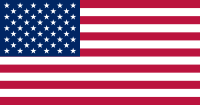 Denison, Texas, USA
Denison, Texas, USA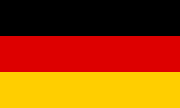 Königswinter, Germany
Königswinter, Germany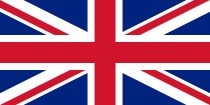 Perth, Scotland, United Kingdom
Perth, Scotland, United Kingdom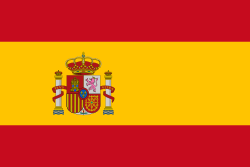 Valdepeñas, Spain
Valdepeñas, Spain